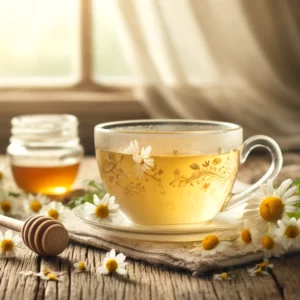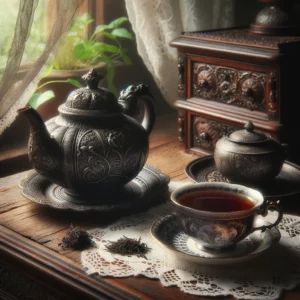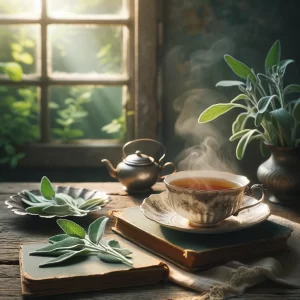Embark on an exciting journey through the misty mountains of Taiwan to discover the enchanting world of High Mountain Oolong Tea. This special tea, known for its unique flavor and cherished by tea lovers around the globe, offers more than just a warm cup to enjoy. Dive into the story, secrets, and delights of High Mountain Oolong Tea through our comprehensive guide. Perfect for beginners and seasoned tea enthusiasts alike, this post will take you from the towering peaks where the tea is grown, through the careful process of brewing the perfect cup, and into the heart of tea culture around the world.
Table of Contents
- Introduction: Discovering High Mountain Oolong Tea
- The Origins and Majestic Peaks
- What Makes High Mountain Oolong Tea Special?
- Brewing the Perfect High Mountain Cup
- Creative Ways to Enjoy High Mountain Oolong Tea
- The Perfect Pair: What to Eat with High Mountain Oolong Tea
- Where to Find and How to Keep Your High Mountain Oolong Tea Fresh
- The Journey from Leaf to Cup: Cultivation and Processing
- Conclusion: Your High Mountain Oolong Tea Adventure Awaits
- Try High Mountain Oolong Tea
Introduction: Discovering High Mountain Oolong Tea
Oolong tea sits between green and black tea in terms of oxidation, offering a world of flavors that are as diverse as they are delightful. Among these, High Mountain Oolong Tea from Taiwan stands out as a treasure. Grown at elevations of more than 1,000 meters, this tea benefits from cooler temperatures and thicker fog, which contribute to its light, floral notes and smooth taste. This introductory section is your first step into the rich, verdant world of High Mountain Oolong Tea.
The Origins and Majestic Peaks
High Mountain Oolong Tea, or “Gao Shan Cha” in Mandarin, is primarily grown in Taiwan’s central mountains. The combination of high altitude, specific climate conditions, and rich soil adds to the tea’s unique flavor profile. These teas are often hand-harvested from gardens nestled in the rugged, beautiful landscapes of Taiwan’s peaks, making each sip a testament to the tea’s lofty origins.
What Makes High Mountain Oolong Tea Special?
- Flavor Profile: High Mountain Oolong Tea is celebrated for its range of flavors. Expect a symphony of sweet, floral notes, often compared to the freshness of orchids, with a smooth, creamy finish that lingers on the palate.
- Unique Characteristics: Compared to other teas, High Mountain Oolong has a more pronounced aroma and a lighter color. Its leaves are typically rolled into tight balls that unfurl when steeped, releasing the tea’s full flavor.
- Craftsmanship: The production of High Mountain Oolong is an art. The careful plucking, withering, rolling, and roasting of the leaves require skilled hands and a deep understanding of tea processing.
Brewing the Perfect High Mountain Cup
Brewing High Mountain Oolong Tea is simple, but a few tips can enhance your experience:
- Water Temperature: Aim for water that is hot but not boiling, around 85°C to 95°C (185°F to 205°F).
- Steeping Time: Start with a steeping time of 3 to 5 minutes. Feel free to adjust based on personal taste preference.
- Loose Leaf Over Bagged: For the best experience, choose loose leaf High Mountain Oolong. This allows the leaves to fully expand and release their flavor.
Creative Ways to Enjoy High Mountain Oolong Tea
- Beyond the Brew: High Mountain Oolong Tea can be a versatile ingredient in your kitchen. Try adding it to smoothies for a refreshing twist or use it as a base for a marinade to bring a subtle tea flavor to grilled meats or vegetables.
- Tea-Infused Treats: Experiment with tea-infused baking, like adding brewed High Mountain Oolong to cake or muffin recipes, creating delicacies with a hint of floral sweetness.
The Perfect Pair: What to Eat with High Mountain Oolong Tea
Pairing food with High Mountain Oolong Tea can enhance both the tea and the food’s flavors. Here are a few ideas:
- Light Pastries and Cakes: Their sweetness complements the floral notes of the tea.
- Fruit: Fresh slices of peach or apple can highlight the tea’s natural sweetness.
- Cheeses: A creamy brie or a mild cheddar can pair beautifully with the tea’s complexity.
Where to Find and How to Keep Your High Mountain Oolong Tea Fresh
- Finding High-Quality Tea: Look for reputable tea shops or online retailers that specialize in Taiwanese teas. They should provide information on the tea’s harvest season and region.
- Storing Your Tea: Keep your High Mountain Oolong Tea in a cool, dry place, away from strong odors. An airtight container is essential to preserve its delicate flavors.
The Journey from Leaf to Cup: Cultivation and Processing
The cultivation and processing of High Mountain Oolong Tea are meticulous tasks that influence its final taste. The process includes:
- Harvesting: Leaves are carefully picked by hand during specific seasons.
- Withering: Leaves are left to wither under the sun, beginning the process of oxidation.
- Rolling: The leaves are then rolled, either by hand or machine, to break the cell walls and enhance flavor.
- Drying: Finally, the leaves are dried to stop oxidation at the desired level, locking in the tea’s unique character.
Conclusion: Your High Mountain Oolong Tea Adventure Awaits
High Mountain Oolong Tea is more than just a drink; it’s an experience that connects you to the high mountain peaks of Taiwan and the rich tea culture. Through this guide, we’ve journeyed from the rugged terrains where the tea is cultivated to the comfort of our homes where we can brew and enjoy it. Whether you’re sipping it solo or sharing it with friends, High Mountain Oolong Tea offers a special moment of tranquility and pleasure. So, embark on your tea adventure, explore its diverse flavors, and find your perfect cup of High Mountain Oolong Tea.
Try High Mountain Oolong Tea
“As an Amazon Associate I earn from qualifying purchases.”
[azonpress template=”grid” asin=”B07RGK4H2B,B01K78VZE4,B01DCA7XCM,B07C8FPQYH,B0BS75118G,B0CXR37V4K”]



